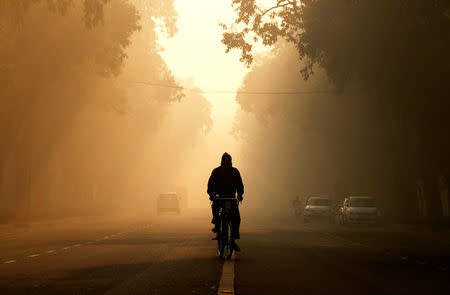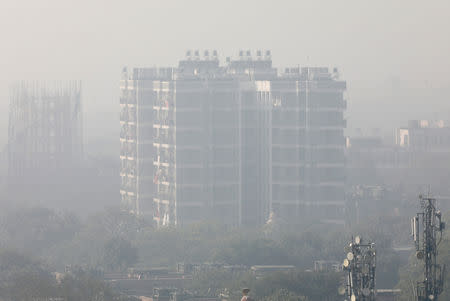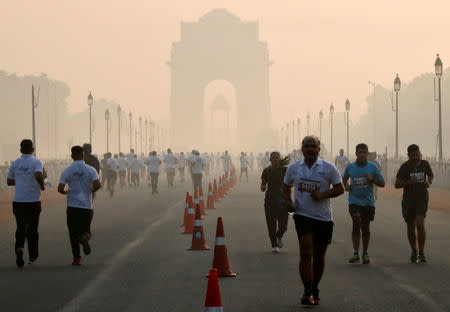As temperatures fall, air quality worsens in Indian capital
NEW DELHI (Reuters) - Pollution levels spiked last week in New Delhi, India's teeming capital of more than 20 million people, climbing to nearly 12 times the recommended level and exacerbating a public health crisis. Senior government officials said the main reasons for the surge in the amount of toxic smog trapped over New Delhi were unusually cold air, including fog, and slow wind speeds. Click here for an interactive Reuters graphic https://tmsnrt.rs/2GORiU9 on the link between Delhi's pollution and falling temperatures and wind speeds. The World Health Organization said this year India was home to the world's 14 most polluted cities. New Delhi was ranked the sixth most polluted. In the city on Sunday, levels of PM 2.5, the amount of tiny particulate matter under 2.5 micrograms found in every cubic meter of air, were at 415, well above "hazardous" levels, as defined by the U.S. Environmental Protection Agency. The agency says any level above 35 can be unhealthy. Pollution levels were exacerbated because of fumes from vehicles, pollutants from coal-fired power plants and industries, as well as smoke from fires being burned to keep people warm. In October and November, crop residue burning in the neighboring states of Haryana and Punjab also contributed to air pollution. In India, air pollution claimed 1.24 million lives in 2017, or 12.5 percent of total deaths, according to a study published in Lancet Planetary Health this month. (Reporting by Mayank Bhardwaj, editing by Raju Gopalakrishnan)








